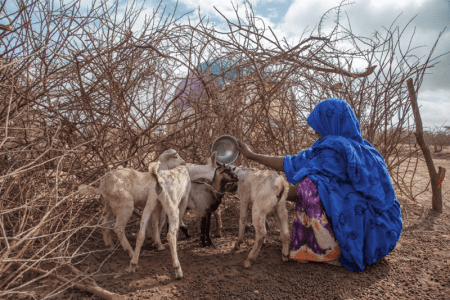
Parts of the East Africa region, particularly eastern Kenya, southern Somalia, and certain Belg-receiving areas of Ethiopia, have already experienced two consecutive poor rainy seasons (Figures 1 and 2), resulting in below-average crop production, poor rangeland conditions, and rising cereal prices across affected areas. This is contributing to worsening food insecurity in a region already struggling with multiple other shocks (e.g., conflict/insecurity, macroeconomic challenges including the socio-economic impacts of COVID-19, and desert locusts). As of September 2021, over 29 million people already faced high levels of food insecurity (IPC Phase 3+) in the IGAD region, including 401,313 people in Ethiopia and 108,000 people in South Sudan facing Catastrophic levels of food insecurity (IPC Phase 5) and an additional 8.3 million people facing Emergency (IPC Phase 4). Acute malnutrition is also alarmingly high with 3.5 million children under five years of age estimated to be wasted in the IGAD region in 2020 (RRFC 2021).
Looking forward, no major improvements in climatic conditions are in sight as all major regional (ICPAC) and global (NOAA, ECMWF, UK MET, IRI) forecasts agree that there is an increased probability of another below-average rainy season between October-December 2021 (Figure 3). Short-term forecasts through late October also confirm a likely poor start of the season over parts of Ethiopia, Kenya, and Somalia. Additionally, current ENSO forecast-based climate analogs indicate elevated chances of below-average seasonal rainfall performance during the March-April-May (MAM) 2022 season over eastern Ethiopia, Kenya, and Somalia according to FEWS NET.
Historically, food security and nutritional outcomes in the region have often deteriorated sharply following consecutive poor rainy seasons. For example, two consecutive failed seasons contributed to the 2011 famine in Somalia while three to four poor seasons, depending on the area, drove the regional 2017 drought emergency. Though recent resilience-building efforts have significantly improved the ability of households to withstand the impacts of shocks for a much longer period compared to a decade or so back, the unprecedented, combined effects of multiple failed seasons and numerous other hazards affecting the region, are a major source for concern at this time.
Should current forecasts materialize and another poor season occurs, the food security impacts for the East Africa region would be significant. For cropping households who have already been struggling with seasons of below-average harvests, another poor harvest would cause food stocks to deplete earlier than usual and households to be dependent on market purchases for a prolonged period, despite rising food prices. For pastoral households, limited pasture and water availability would likely drive atypical movements, poor livestock body conditions, low livestock prices, and reduced access to milk (key for meeting the nutritional needs of pastoral children).
Source: FSNWG